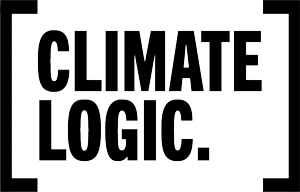The Australian Government’s 2025 Federal Budget dropped late last month, and while it might not have been front-page news for every business owner, there are major implications hidden in the line items—especially for businesses thinking seriously about climate impact, sustainability, and future-proofing their operations.
From large-scale investments in renewable energy to new support for green industries and workforce upskilling, this year’s budget sends a clear message: Australia is preparing for a low-carbon future. But is it doing enough? And what does it mean for you?
Key Climate Allocations at a Glance
Here are some of the most noteworthy climate-related budget measures that could affect the business landscape:
- $2 billion over 19 years to help aluminium smelters shift to renewable electricity sources. This aims to support the decarbonisation of one of Australia’s most energy-intensive sectors.
- $1 billion over seven years to develop “green” iron production facilities and supply chains, offering a boost to Australia’s emerging clean manufacturing economy.
- $250 million over five years to protect 30% of Australia’s land and sea by 2030, reinforcing the government’s commitment to nature-positive goals.
- $212 million to strengthen protections for Australia’s natural environment and manage pollutants.
- $50 million for TAFE facility upgrades to support energy and climate-related training.
- $10 million over three years for a new National Hydrogen Technology Skills Training Centre in Victoria.
- Up to $40 million in international funding for climate-inclusive development through the Mekong-Australia Partnership.
What This Means for Business
For forward-thinking Australian businesses, this budget is a call to action. Here’s how it could affect you:
1. Manufacturing & Heavy Industry: If you’re in manufacturing, particularly in sectors like aluminium or steel, this is your chance to explore government-backed pathways to decarbonisation.
2. Supply Chain Transformation: With growing funding for green iron and hydrogen, supply chains are poised for disruption. Early adopters stand to benefit from clean, competitive advantages.
3. Workforce Development: The investment in TAFE and hydrogen skills training opens up reskilling opportunities. Businesses that support training and adaptation will be more resilient in the face of climate-driven change.
4. Compliance & ESG Strategy: Although the budget isn’t explicit on emissions disclosure, the broader regulatory trend toward ESG transparency means businesses must begin collecting and managing climate data today.
5. Climate Risk & Opportunity: If your business isn’t factoring climate risk into your strategic planning, now’s the time. The government is starting to send financial signals that reward climate readiness.
What’s Missing?
Despite these positive steps, the budget has drawn criticism for what it doesn’t do:
- Fossil fuel subsidies remain untouched, with $47.7 billion still allocated to fuel tax credits over the forward estimates.
- There is no dedicated climate adaptation fund to support small and medium businesses dealing with flood, fire, or extreme heat disruptions.
- Scope 3 emissions remain outside mandatory disclosure requirements for now, despite their growing relevance.
Our Take
At Climate Logic, we see this budget as a step in the right direction—but one that needs to be matched by ambitious, business-led action. Funding is flowing. Training is expanding. The roadmap is taking shape. But your business still has to take the wheel.
Whether you’re looking to cut emissions, prepare for ESG reporting, or redesign your supply chain with sustainability in mind, the message is clear: the time to act is now.
Need help navigating the new climate economy? We work with Australian businesses ready to lead in sustainability. Let’s make your climate impact count.

![[Climate Logic]](https://climatelogic.com.au/wp-content/uploads/2023/07/climate-logic_logo_reverse.png)

